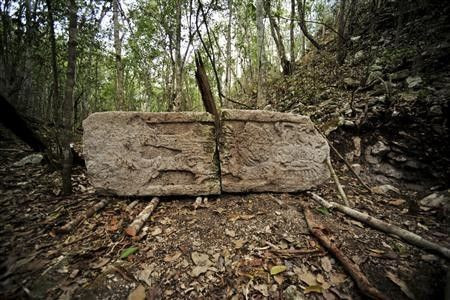Two Ancient Mayan Cities Discovered in the Mexico Jungle

For centuries, they were hidden in the silence of lush green forest of Mexico. But archaeologists finally discovered two ancient Mayan cities from Mexican forest.
According to the report by news.discovery.com, the cities were situated in the southeastern part of the Mexican state of Campeche,Yucatan peninsula. Because of the thick vegetation in that area, they were barely accessible.
"Aerial photographs helped us in locating the sites," expedition leader Ivan Sprajc, of the Research Center of the Slovenian Academy of Sciences and Arts (ZRC SAZU), said.
Sprajc along with his team found these huge remains as they continued to explore the area which was extended over 1800 square miles around Chactun, a large Maya city recognised by the Slovenian archaeologist in 2013.
This site was first located and visited in the 1970s by an American archaeologist named Eric Von Euw. He documented details of the facade and other stone monuments with drawings which remained unpublished till date.
But the exact location of one of the cities, Lagunita as referred by Von Euw was never found.
This city reportedly featured an extraordinary facade with an entrance representing the open jaws of an earth monster and that was when Laguinita was identified after the archaeologists compared the recently discovered facade and monuments with Von Euw's drawings.
"The monster-mouth facade represents a Maya earth deity related with fertility. These doorways symbolize the entrance to a cave and, in general, to the watery underworld, place of mythological origin of maize and abode of ancestors," Sprajc was quoted saying.
Also a number of huge palaces like structures, a ball court and a temple pyramid with a height of 65 ft along with 10 stelae (tall sculpted stone shafts) and three altars were found. They featured extremely well preserved hieroglyphic inscriptions.
Experts claimed that they may have been built during (300BC-250AD).
The other unknown city that was discovered by Sprajc was named Tamchen, which means "deep well" in Yucatec Maya.
Inside Tamchen, more that 30 chultuns were located justifying the name of the city. These are bottle shaped chambers mostly used to collect rain water.
Tamchen, too, were surrounded by large buildings, remains of an acropolis supporting a courtyard with three temples. A pyramid temple with a sanctuary on top and a stela and an altar at its base was also located.
"Both cities open new questions about the diversity of Maya culture, the role of that largely unexplored area in the lowland Maya history, and its relations with other polities," Sprajc said.




















